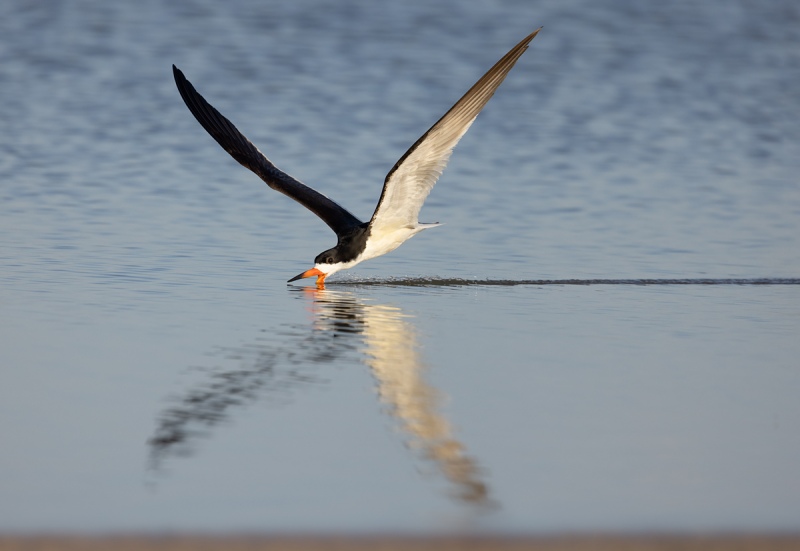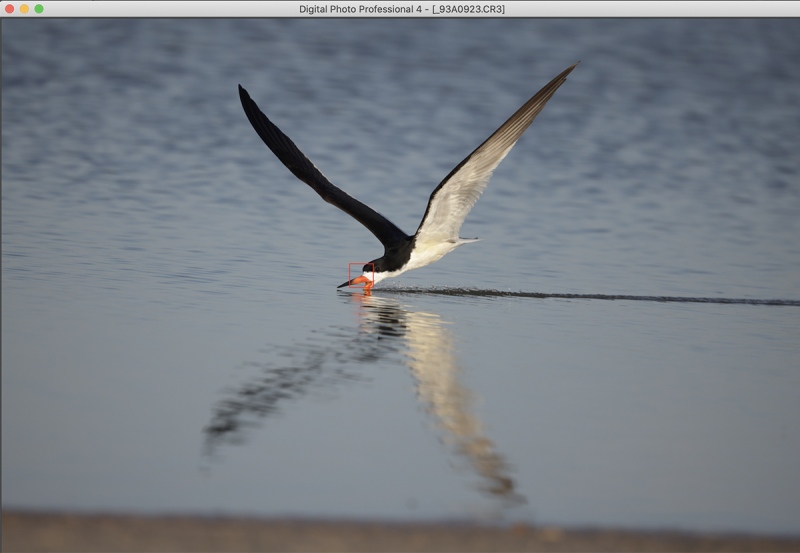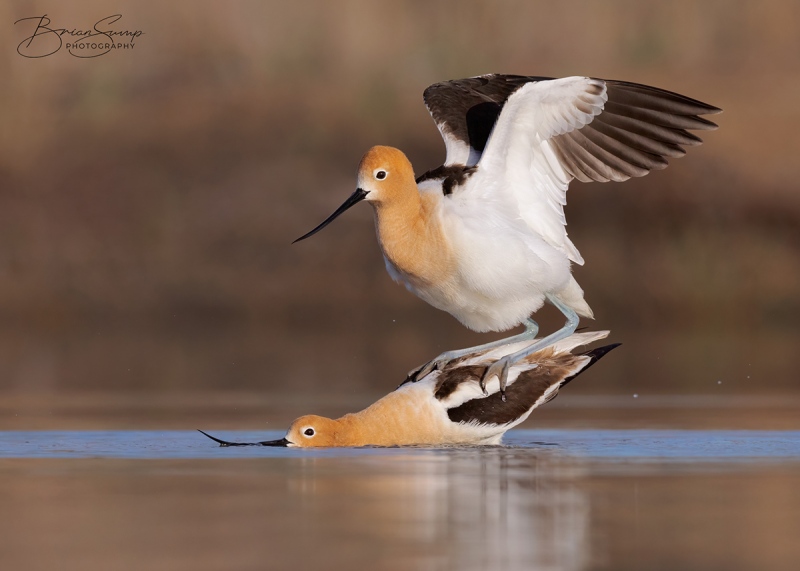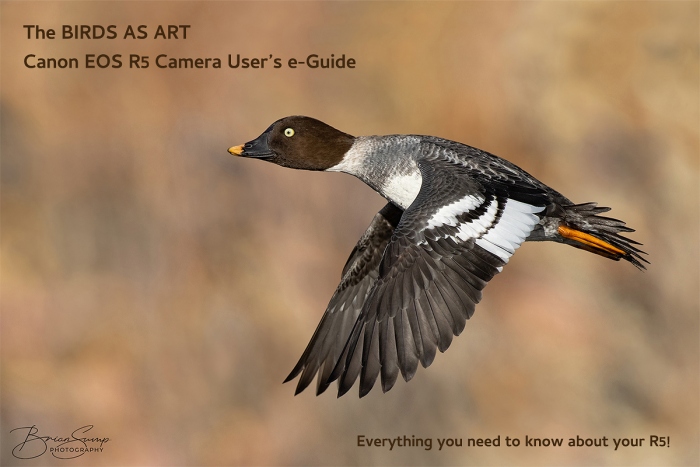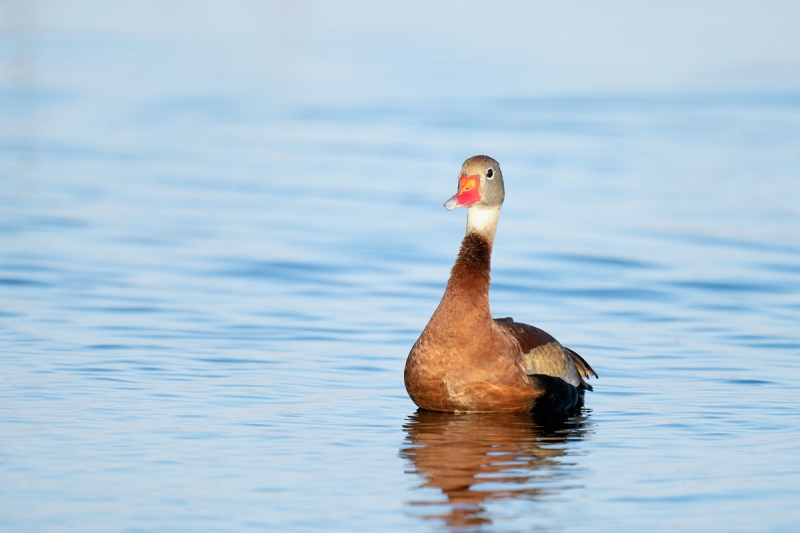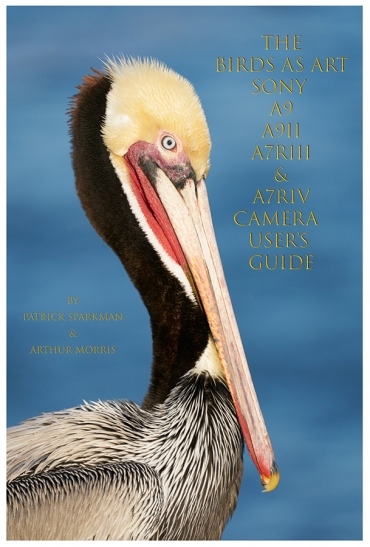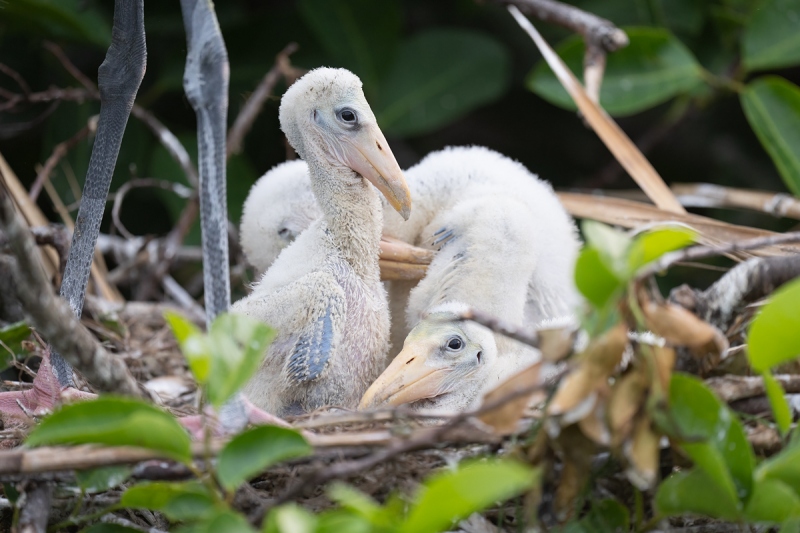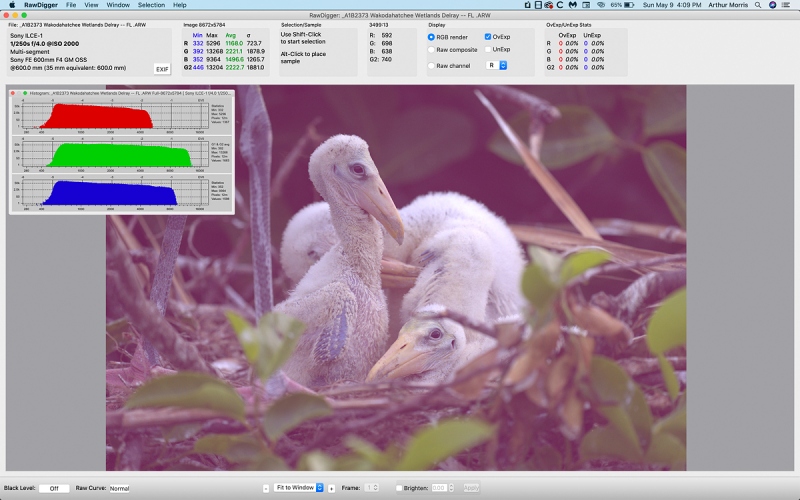What’s Up?
We had a second great morning at DeSoto with a big wading bird feeding spree. Before the sun came over the one big cloud in the east, I got a few killers on Snowy Egret and Tricolored Heron hand holding the 600 f/4 GM lens. Once again, the Red Knots proved to be elusive. I did get some nice ground level images of Marbled Godwit at 840mm and Dunlin and Semipalmated Plover at 1200mm with the Panning Ground Pod. There will be lots more on that technique here soon. I just missed on a female frigatebird diving very close to shore … The tally for the morning was 1568 images made, 1428 deleted, and 140 keepers after the first edit.
Tired of slogging around in the sand and mud and walking too far in the heat on the beach, Anita and I opted to explore a rookery north of Tampa that she learned about from Dr. Tom, a very nice man she met on the beach at DeSoto. It was pretty productive. There were lots of Wood Storks and Great Egrets. The highlight of the session for me was a just-out-of-the-nest Black-crowned Night Heron. It played hide and seek with me for two hours before landing atop a bush and posing for vertical head and neck portraits right before we left.
Today is Wednesday 12 May. We will be heading to DeSoto early for the third straight morning and then driving back to ILE. The forecast for St. Pete is for mostly cloudy with a gentle southeast breeze, in other words, hazy, hot and humid. Wherever you are, and whatever you are doing, I hope that you have a great day.
This blog post took almost two hours to prepare and makes 139 straight days with a new one. Please remember that if an item — a Delkin flash card, or a tripod head, for example, that is available from B&H and/or Bedfords and is also available in the BAA Online Store, it would be great if you opt to purchase from us. We will match any price. Please remember also to use my B&H affiliate links or to save 3% at Bedfords by using the BIRDSASART discount code at checkout. Doing either often earns you free guides and/or discounts. And always earns my great appreciation.
Bedfords
The very affable Steve Elkins asked me to let you know that Bedfords has many Canon R5 bodies in stock right now. He is expecting some Control Ring Adapters, more than a few Canon RF 70-200s, and several RF 800mm lens in a day or two. Don’t forget to save 3% at Bedfords (and enjoy free 2nd-Day Air fed-Ex) by using the BIRDSASART discount code at checkout.
Please Remember
With income from IPTs greatly reduced, please — if you learn from and enjoy the blog, remember to use one of my two affiliate programs when purchasing new gear. Doing so just might make it possible for me to avoid having to try to get a job as a Walmart greeter and will not cost you a single penny more. And if you use Bedfords and remember to enter the BIRDSASART code at checkout, you will save 3% on every order and enjoy free second-day air shipping. In these crazy times — I am out at least forty to sixty thousand dollars so far due to COVID 19 (with lots more to come) — remembering to use my B&H link or to shop at Bedfords will help me out a ton and be greatly appreciated. Overseas folks who cannot order from the US because of import fees, duties, and taxes, are invited to help out by clicking here to leave a blog thank you gift if they see fit.
New and Better Bedfords Discount Policy!
You can now save 3% on all of your Bedfords photo gear purchases by entering the BIRDSASART coupon code at checkout. Your discount will be applied to your pre-tax total. In addition, by using the code you will get 2nd day air shipping via Fed Ex.
Grab a Nikon AF-S Teleconverter TC-14E III and save $14.99. Purchase a Canon EOS R5 and your discount will be $116.97. Purchase a Sony FE 600mm f/4 GM OSS lens and save a remarkable $389.94! Your Bedford’s purchase no longer needs to be greater than $1,000.00 for you to receive a discount. The more you spend, the more you save.
Money Saving Reminder
Many have learned that if you need a hot photo item that is out of stock at B&H and would enjoy free second-day air shipping, your best bet is to click here, place an order with Bedfords, and enter the coupon code BIRDSASART at checkout. If an item is out of stock, contact Steve Elkins via e-mail or on his cell phone at (479) 381-2592 (Central time). Be sure to mention the BIRDSASART coupon code and use it for your online order to save 3% and enjoy free 2nd-day air shipping. Steve has been great at getting folks the hot items that are out of stock at B&H and everywhere else. The wait lists at the big stores can be a year or longer for the hard to get items. Steve will surely get you your gear long before that. For the past year, he has been helping BAA Blog folks get their hands on items like the SONY a9 ii, the SONY 200-600 G OSS lens, the Canon EOS R5, the Canon RF 100-500mm lens, and the Nikon 500mm PF. Steve is personable, helpful, and eager to please.


Gear Questions and Advice
Too many folks attending BAA IPTs (remember those?) and dozens of photographers whom I see in the field and on BPN, are–out of ignorance–using the wrong gear especially when it comes to tripods and more especially, tripod heads… Please know that I am always glad to answer your gear questions via e-mail
|
|
|
This image was created on 28 April 2021 by Donna Bourdon on the second Fort DeSoto IPT. She used the handheld Canon RF 100-500mm f/4.5-7.1L IS USM lens (at 500mm) and the highly touted 45MP Canon EOS R5 Mirrorless Digital camera body. ISO 500. Exposure determined by test exposure & histogram and blinkies evaluation: 1/2000 second at f/7.1 (wide open) in Manual mode. AWB at 6:56am on a clear morning. Face Detection plus Tracking worked beyond perfectly. Click on the image to enjoy a larger version. Image #1 courtesy of and Copyright 2021: Donna Bourdon |
Targets Acquired and Destroyed
One of Donna’s goals on the second DeSoto IPT was to create a decent image of a skimmer skimming. She was thrilled when she came up with Image #1. When she processed it, she cropped to put the bird on the right side of the frame. “No, no, Nanette” I said. “Use the wake as part of the image design and put the bird on our left heading out of frame.” So I did. She loved it even more. She met another goal with some fine dancing Reddish Egret images.
|
|
|
Face Detection plus Tracking worked beyond perfectly. Click on the screen capture to better see the active AF point. Image #1A: DP 4 Screen Capture for the Black Skimmer skimming image |
Face Detection plus Tracking AF
Take a look at the placement of the AF point; it would be hard to imagine anything better. Learn how to set up your R5 for flight and general bird photography in the BIRDS AS ART Canon EOS R5 Camera User’s e-Guide. You spent almost $4,000.00 on a camera body; why not spend a measly $75.00 to learn, how to use it?
|
|
|
With the handheld Canon EF 600mm f/4L IS III USM lens, the Canon Extender EF 1.4X III, the Canon Control Ring Mount Adapter EF-EOS R, and the highly-touted Canon EOS R5 Mirrorless Digital Camera body (in 1.6 crop mode). ISO 1000. Exposure determined by test exposure & histogram and blinkies evaluation: 1/4000 sec. at f/8. Image #2 courtesy of and copyright 2021: Brian Sump Photography. Click on the image to enjoy a larger version.
|
Sump Scores and BPN
I met Brian Sump about than a year ago in the Avian Forum at BirdPhotographers.Net. Like Kevin Hice before him, Brian is a shining example of young bird photographers who have worked hard and vastly improved their skills and the quality of their images by participating full out in the Avian Forum. You can learn more about Brian’s progress in the blog post here.
Brian is quite clever with words when he chooses titles for his BPN posts. For this image he came up with Circle of Life. You can read the discussion on frame proportions and space in the frame and learn what the boys and girls on BPN had to say about the image here in Avian.
|
|
|
Cover Image courtesy of and Copyright 2021 Brian Sump (Sump scores!) The BIRDS AS ART Canon EOS R5 Camera User’s e-Guide |
The BIRDS AS ART Canon EOS R5 Camera User’s e-Guide: $75.00
The guide is 82 pages long: 21,458 words. More than 50 DPP 4 Autofocus-depicting screen captures. And a 31 minute 44 second educational video. This guide took three and a half months of hard work and a ton of help from at least seventeen very helpful and generous folks.
The guide covers — in great detail — all Menu Items that are relevant to bird, nature, and wildlife photography. It does not cover video. The section on AF methods and the AF Gallery has been expanded from the R5/R6 AF e-guide. It remains the one of the great strengths of this guide. I share my thoughts on what I am sure is the single best AF Method for photographing birds in flight. As most of you know, the guide includes a simple and easy way to change AF Methods that was introduced to me by Geoff Newhouse. In the AF Gallery you will see exactly how Face Detection plus Tracking AF works. In the Educational R5 Gallery video, I share my favorite R5 images along with dozens of bird photography tips and techniques.
In addition, I teach you how to get the best exposures with your R5. Detailed instructions on using the great In-camera HDR and Multiple Exposure features will be appreciated by creative folks who like to have fun. The three shutter modes are explained in detail as well. Bruce Dudek solved the can’t-get-to-Auto ISO problem that had stumped everyone at Canon. This information is of course shared in the guide. You will learn how to set up your EVF (Electronic Viewfinder) and Screen toggle options. Not to mention that the mysterious performance of the Q Button is revealed and simplified. Brian Sump’s images reveal how well you can do when using the R5 with EF lenses using one of the three Canon EF-EOS R Mount Adapters (as Donna did with Image #1 below). You will learn how I use Customize Dials to put either ISO or EC on the Thumb Dial and how to set up and save Custom Shooting Modes (C1-C3) that can remember both your Customize Dial and Customize Button settings! That is something that none of the SONY bodies do. 🙁 Near the end of the guide I share my all-important MY MENU items with you.
Like all BAA educational materials, the R5 guide is written in my informal, easy-to-follow style. I am quite proud of this guide and look forward to hearing your thoughts on our hard work.
You can purchase your copy of the BIRDS AS ART Canon EOS R5 Camera User’s e-Guide for $75.00 here in the BAA Online Store or by calling Jim in the office weekday afternoons at 863-692-0906 with your credit card in hand.
From the late Luis Grunauer via e-mail
I’ve watched the R5 gallery video. I LOVE THE PHOTOS and the stories behind them, not to mention that the EXIF data is displayed in Photo Mechanic. Your explanations of the settings and the processes are very helpful. Your comments on framing and composition (both the great ones and the ones you refer to as “created by operator error”) were enlightening. It gives folks a chance to learn from someone with lots of in-the-field hands on experience with the R5! Well done and thanks so much for sharing it with me. There is some awesome teaching in the video to say the least!
From Ron Santini via e-mail
I have an R5 and purchased your “The BAA R5/R6 AF Guide” about a month ago. It has been a game-changer for me. I previously used back button focus (BBF), but after following your guide, that is a thing of the past. You truly simplified the process and I just want to thank you.
Typos
With all blog posts, feel free to e-mail or to leave a comment regarding any typos or errors.


